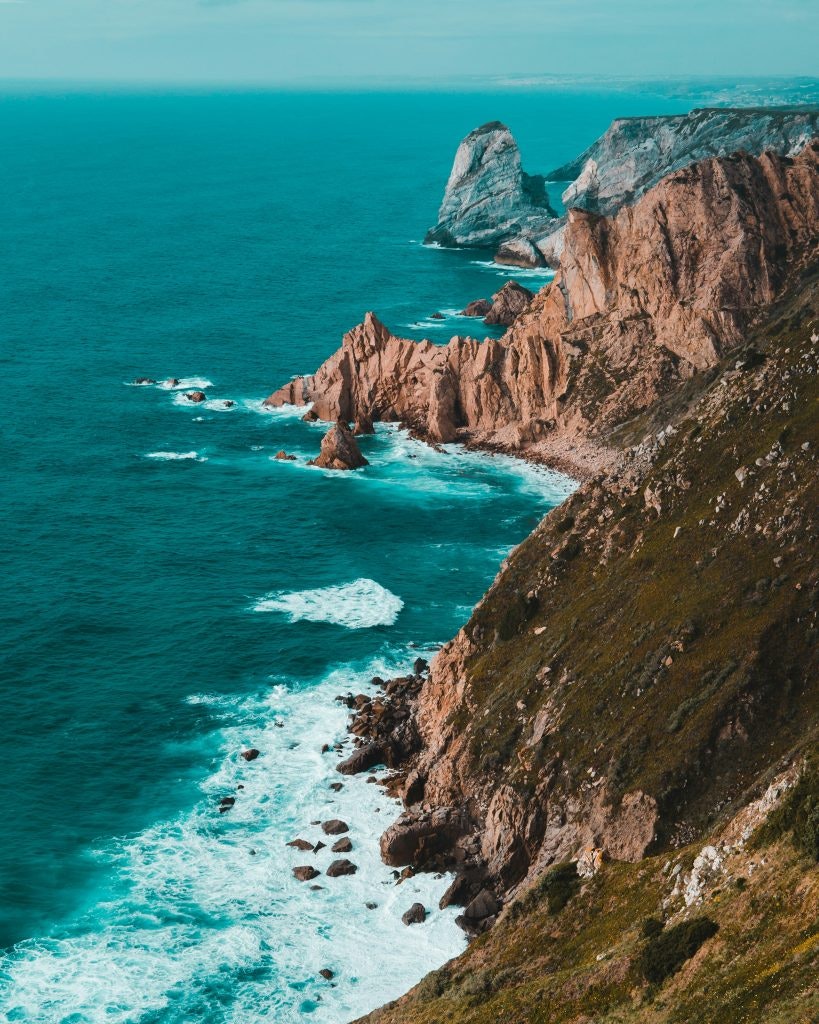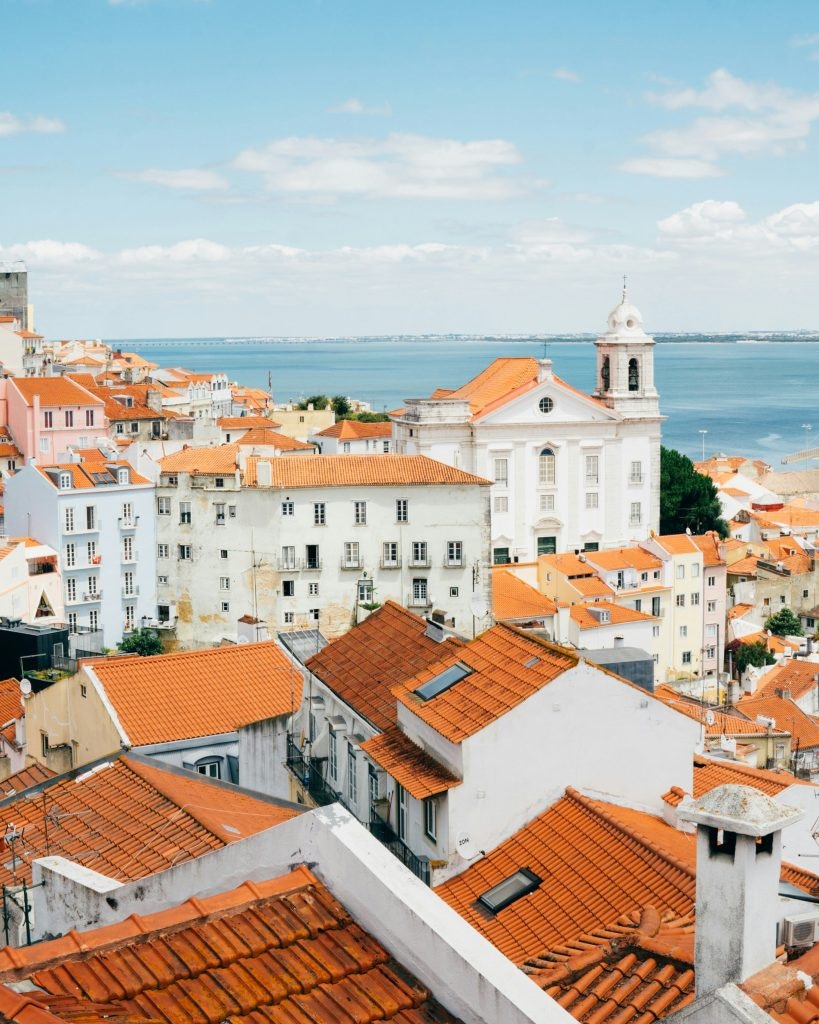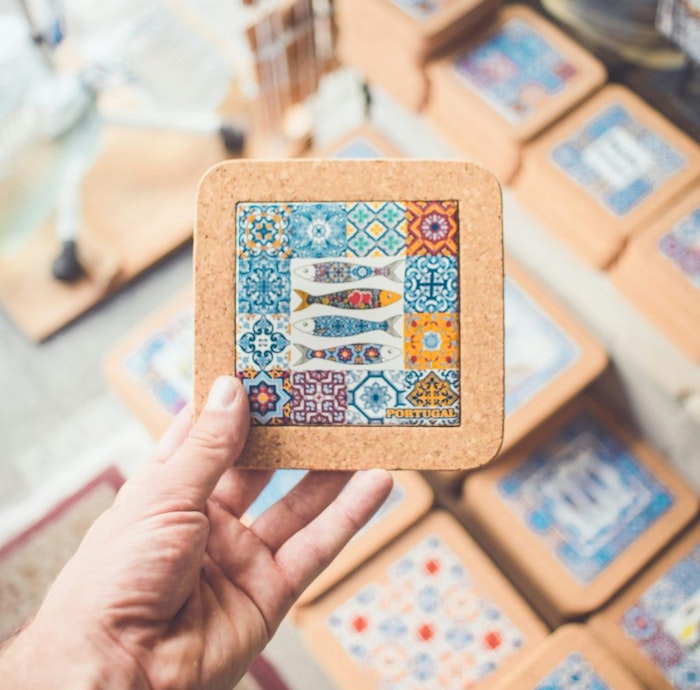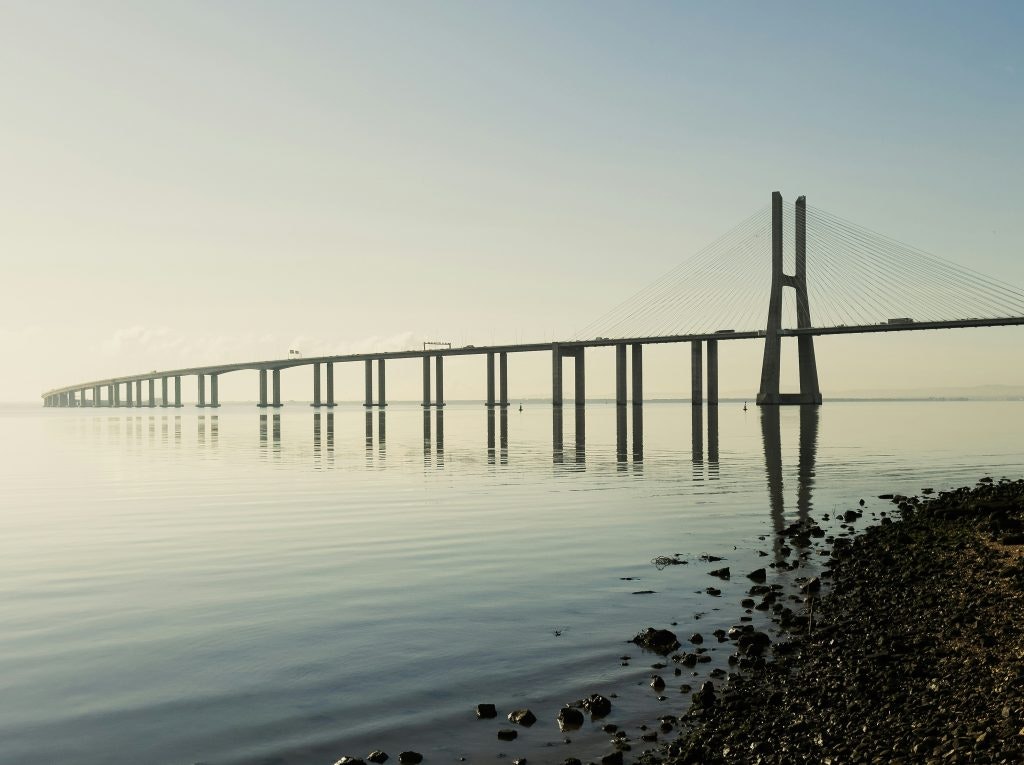







Portugal remained at the top of my Europe bucket list for years. My ideal trip to Portugal includes a campervan along the Atlantic coast from Porto to Faro in Southern Portugal.
Mainland Portugal dazzles with 17 UNESCO World Heritage sites. Officially the Portuguese Republic, Portugal ranks among the world’s safest nations in Western Europe and around the world (7th globally according to the 2024 Global Peace Index).
| Key Facts About Portugal | Details |
| Population(2025) | 10,411,834 |
| Official Language | Portuguese |
| Currency | Euro |
| Capital | Lisbon |
| Area | 35,610 sq mi (92,230 km2) |
| Main Religion | Christianity |
11 Fun Facts About Portugal

Stunning cliffs at Cabo da Roca offer breathtaking views of the Atlantic Ocean.
Although no country truly ever “owned” half the world, the Treaty of Tordesillas (1494) established a demarcation line that divided newly discovered lands between Spain and Portugal. Portugal received control over the territories to the east, while the west was under Spanish rule. This division had lasting effects, including the Portuguese colonization of Brazil and a significant Portuguese presence in Africa and Asia that lasted for centuries and is still visible today.
The Portuguese Empire spanned 600 years. Let’s have a detailed look at one of the wildest fun facts about Portugal:

A vibrant sea of orange tiles contrasts with the clear blue sky in Lisbon.
Portugal is the oldest nation-state in Europe founded in 1143 and has maintained its original borders since the mid-13th century.
Portugal’s capital, Lisbon, has an even longer history, founded around 1200 BCE, predating the Roman Empire and making it older than Rome and other major European capitals like London, Paris, and Madrid. Portugal’s capital has a rich historical significance, with Guimarães as the first capital, followed by Coimbra, and even Rio de Janeiro during the royal family’s exile.
With about 260 million native Portuguese speakers it is the most spoken language in the Southern Hemisphere. Besides Portugal, Portuguese is an official language of nine countries across four continents:
Additional fun fact: The Portuguese language even influenced Japanese. For example, the Portuguese word for bread, “pão,” transformed into “pan” in Japanese. Time to eat some pan during your next visit to Japan.
Port wine, or simply Port, is Portugal’s most famous export product and national drink. Originated from the Douro Valley in northern Portugal, it is made by adding grape spirit to the wine during fermentation, which stops the process and leaves residual sugar, resulting in a sweet, rich wine. To preserve this exquisite wine, a quality cork is essential. Fortunately, Portugal excels in this area as well, because…
With over 60% of the global production, Portugal is the world’s largest cork producer. With a forest covering approximately 2 million acres (809,371 hectares), Portugal hosts the world’s largest cork forest. Portuguese cork can be found as parts of artworks, shoes, wallets, and has even been used in space by the European Space Agency as insulation.

Portuguese cork coaster featuring a maritime design.
A disagreement between a mother and her son eventually led to Portugal’s independence as a country. I guess Portugal’s independence is taking ‘because I said so’ on a whole new level!
Turns out, arguing with your mom can have big consequences:
| Event | Description |
|---|---|
| Henry, Count of Portugal’s Death in 1112 | Henry passed away, and his wife, Theresa, ruled on behalf of their son, Afonso Henriques. |
| Theresa’s Alliance with Galician | Theresa allied with Galician forces to increase her power and seek independence from León and Castille. |
| Afonso’s Opposition | Afonso Henriques opposed his mother’s alliance with Galicia, fearing Portugal would fall under Galician control. |
| Battle of São Mamede in 1128 | Afonso led his forces against those loyal to his mother. Despite being outnumbered, he secured a decisive victory and became Count of Portugal. |
| Recognition of Independence in 1139 | Afonso Henriques declared Portugal independent from the Kingdom of León and became the first king of the Kingdom of Portugal. |
The Vasco da Gama Bridge, the second-longest bridge in Europe after the Crimean Bridge in Russia, spans from Portugal’s capital to the southern region of the country. This structure is one of Portugal’s most famous landmarks with photos of the Vasco da Gama Bridge all over images of Portugal.

The Vasco da Gama Bridge in Lisbon, spanning the Tagus River, is known for its impressive length and architectural design.
Portugal is a world leader in renewable energy production with a focus on wind farms, solar panels, and hydroelectric energy, due to its favorable climate and geographic location. In 2024, renewable sources accounted for 71% of Portugal’s electricity consumption, with wind and hydropower being the largest contributors. The country has set ambitious targets to achieve 80% renewable electricity by 2026 and carbon neutrality by 2045.
Read more: Guide to starting a service club with climate and clean-energy project ideas
Portugal was one of the first countries to adopt the euro, giving up its own currency, the Portuguese escudo, in 1999. Even so, until 2022, Portuguese people were still able to exchange Portuguese escudo banknotes for euros.
💡 Want more trivia?
Browse all Fun Facts articles.